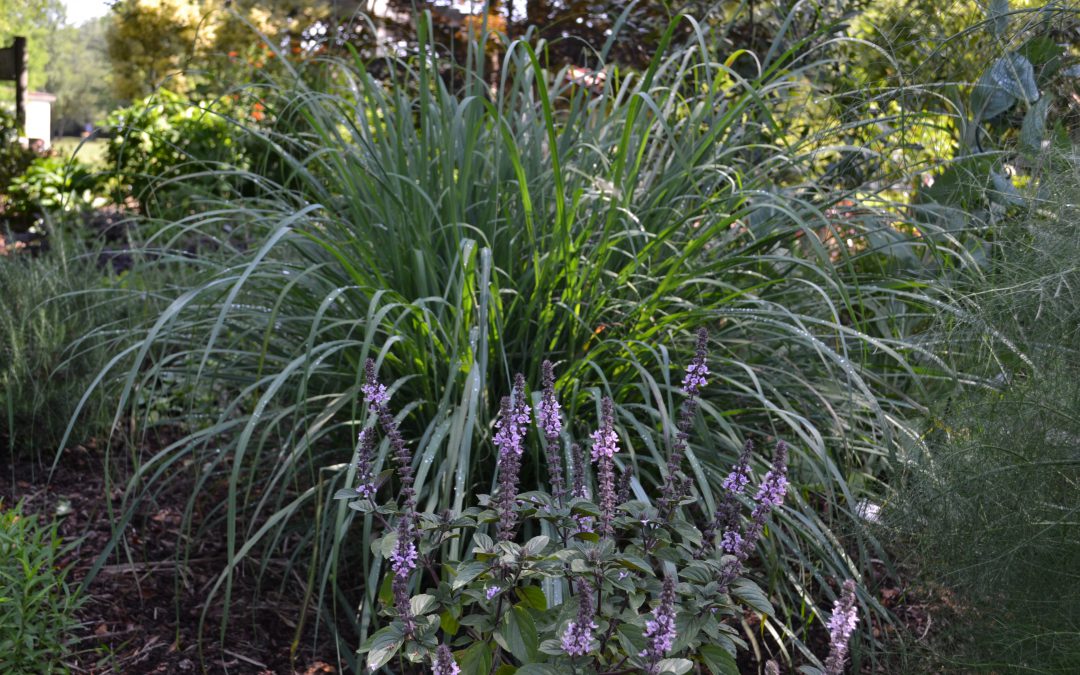
Video: Growing and Using Lemongrass
Lemongrass is an easy herb to grow in the North Florida Garden. Learn the basics of plant care and ideas for use in the kitchen with UF IFAS Extension Escambia County.

Lemongrass is an easy herb to grow in the North Florida Garden. Learn the basics of plant care and ideas for use in the kitchen with UF IFAS Extension Escambia County.
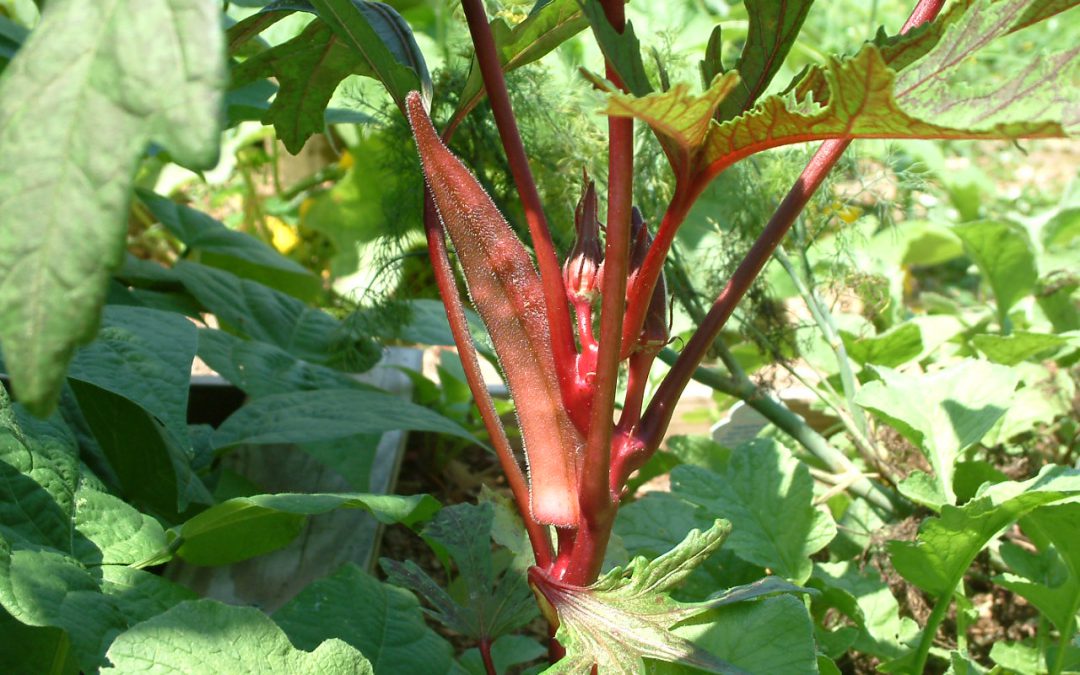
Learn about okra in summer’s heat and when to harvest for tender fruit with UF / IFAS Extension Escambia County.

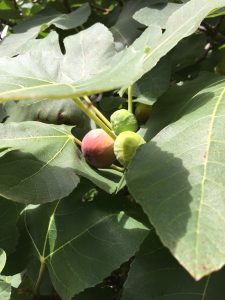
Ripe figs are a deep shade of pink to purple. Larger green figs will ripen in a few days. Photo credit: Carrie Stevenson
Summer is full of simple pleasures—afternoon rainstorms, living in flip flops, and cooling off in a backyard pool. Among these, one of my favorites is walking out my door and picking handfuls of figs right from the tree. Before we planted our tree, my only prior experience with the fruit was a Fig Newton—I’d never eaten an actual fig, much less one picked fresh. Now, they are my favorite fruit.
Native to Asia Minor and the Mediterranean, figs were introduced to Florida in the 1500’s by Spanish explorers. Spanish missionaries introduced these relatives of the mulberry to California a couple hundred years later. Figs are best suited to dry, Mediterranean-type climates, but do quite well in the southeast. Due to our humidity, southern-growing figs are typically fleshier and can split when heavy rains come through. The biggest threats to the health of the trees are insects, disease (also due to our more humid climate) and root-knot nematodes.

Fig trees can grow quite large and produce hundreds of fruit each year. Photo credit: Carrie Stevenson
Our tree started out just a couple of feet tall, but 15 years ago we replanted it along a fence in our back yard. It grew so large (easily 25 feet tall and equally wide) that it hangs over our driveway, making it handy to grab a few as I head out for a walk or hop in the car to run errands. The tree is in full sun at the bottom of a slope, and seems to be a satisfied recipient of all the runoff from our backyard. This position has resulted in a thick layer of soil and mulch in which it thrives. In the last year, we pruned it down to an arms-reach height so that we could actually get to the figs being produced.
We usually see small green fruit start to appear in early May, becoming fat and ripe by the second half of June. The tree produces steadily through early August, when the leaves turn crispy from the summer heat and there’s no more fruit to bear. The common fig doesn’t require a pollinator, so only one tree is necessary for production. The fiber-rich fig is also full of calcium, potassium, and vitamins A, E, and K. As it turns out, the “fruit” is actually a hollow peduncle (stem) that grows fleshy, forming a structure called a synconium. The synconium is full of unfertilized ovaries, making a fig a container that holds both tiny flowers and fruit in one.
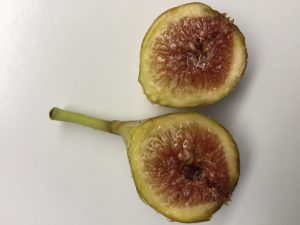
The insides of a fig show the small flowering structures that form the larger fruit. Photo credit: Carrie Stevenson
With the hundreds of figs we’ve picked, my family has made fig preserves, fig ice cream, baked figs and of course eaten them raw. We typically beg friends and neighbors to come help themselves—and bring a ladder—because we can’t keep up with the productivity. The local birds and squirrels are big fans, too. Often you can tell you’re near our tree from around the block, as the aroma of fermenting fruit baking on the driveway is far-reaching.
No matter what you do with them, I encourage planting these trees in your own yard to take full advantage of their sweet, healthy fruit and sprawling shade. As Bill Finch of the Mobile (AL) botanical gardens has written, “fresh…figs are fully enjoyed only by the family that grows them, and the very best figs are inevitably consumed by the person who picks them.”
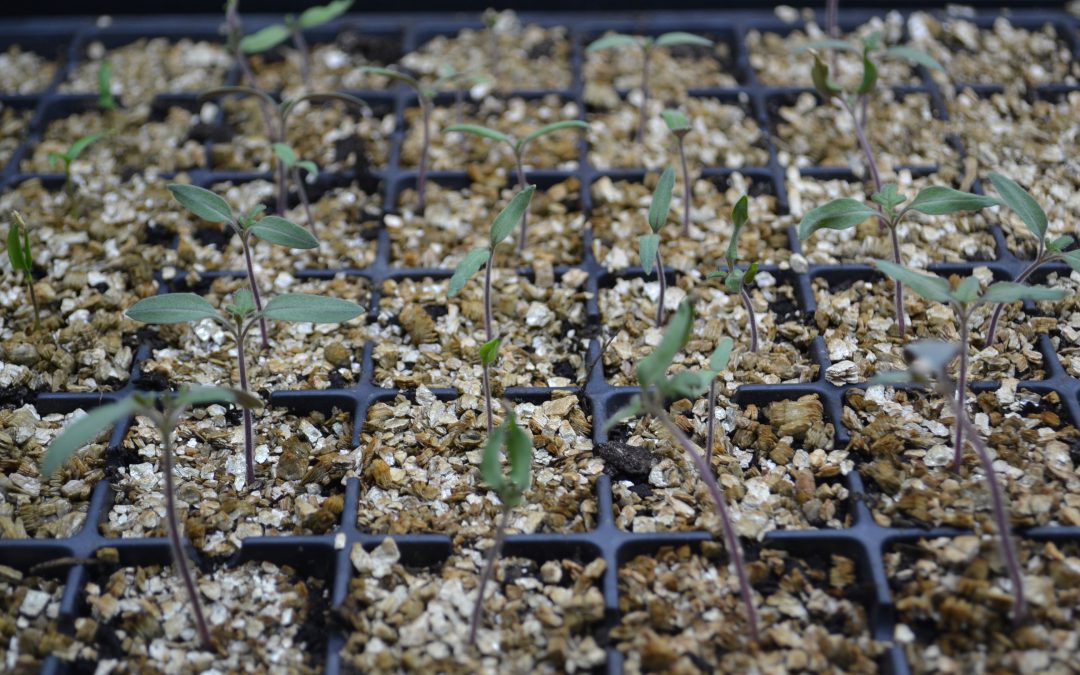
Many gardeners enjoy saving their own seeds for next year’s garden. Learn the basic steps of saving seeds from your favorite tomato selections.
View the handout version too.

Learn a little about cantaloupe that is growing in the late spring garden. Beth Bolles with UF IFAS Extension in Escambia County shares experience from her backyard garden.

During these unusual times, the Gardening in the Panhandle Team has been working to bring you quality remote content through this online newsletter. In that vein, we have developed some new educational programming for our loyal readers.
We are providing one hour “Gardening in the Panhandle LIVE!” sessions on Zoom. These will occur during lunch hour, from 12:00 to 1:00 CDT. They will also be hosted on the Gardening in the Panhandle Facebook page and recorded if you can’t participate live. So, whether you are at home or work, bring your lunch up to your desk (or smart device) and enjoy Gardening in the Panhandle Live!
Click on the topic below to pre-register and submit your questions one week in advance.
Archived videos with closed captioning are linked to topics about one week after event airs.
The schedule follows below:
| Date | Topic | Panelists | 12-1pm CDT |
| May 28 | Vegetables Gardening | Matt Lollar, Evan Anderson, Matt Orwat | |
| June 11 | Lawn and Turfgrass | Larry Williams, Daniel Leonard, Beth Bolles, Daniel Leonard | |
| June 25 | Ornamental & Landscape | Sheila Dunning, Matt Lollar, Stephen Greer, Matt Orwat | |
| July 9 | Butterfly Gardening | Mary Salinas, Julie McConnell, Beth Bolles | |
| July 23 | Prepping for the Fall Garden | Matt Lollar, Danielle Sprague, Molly Jameson | |
| August 6 | Open Ended Q&A | Mary Salinas, Evan Anderson, Beth Bolles, Matt Orwat | |
| August 20 | Gardening for Pollinators | Dr. Gary Knox, Mark Tancig, Mary Salinas, Heather Kalaman | |
| September 10 | Fruiting Trees and Shrubs | Dr. Xavier Martini, Danielle Sprague, Trevor Hylton | |
| September 24 | Gardening in Florida Soils | Ray Bodrey, Matt Lollar, Pat Williams, Mark Tancig | |
| October 1 | Planting Trees and Shrubs | Larry Williams, Ray Bodrey, Beth Bolles, Stephen Greer | |
| October 15 | Cool Season Gardening/Cold Protection | Mary Salinas, Matt Lollar, Larry Williams | |
| October 29 | Landscape Pests (insect & disease) | Danielle Sprague, Matt Orwat, Evan Anderson, Dr. Adam Dale | |
| November 12 | Selection and Care of Holiday Plants | Matt Orwat, Larry Williams, Sheila Dunning, Stephen Greer |